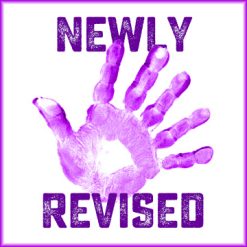|
VOICE ACTING Text Analysis: To Determine The Voice Over Script's Story, Create A Simple 'Log Line'  By Patrick Fraley By Patrick FraleyVoice Over Performer and Trainer Note: This article is excerpted with permission from the author's newly revised Complete Book of Voice Over Exercises, available here.
Let me take you to
preparing for an audition or performance. First, you move toward the skill of
determining the story - coming up with a Log Line. This step is critical. Not
understanding the story - so you can't realize the story - is the number one error
made by performers. WHAT'S THE PROBLEM? I'm a rabid
proponent of text analysis. I could spend weeks teaching it. However, knowing
how unsexy it is, I'm willing to get it down to the absolute minimum just so
any and every performer will do it. Here's what you do: Read the copy, script,
or text, reining yourself in from making any performance choices. Then ask
yourself the following question: What's The Problem? Since Conflict or the
Implied Conflict (the problem) is central to story, you'll be focusing on the
most important aspect of text analysis: finding the story. All the rest of your
questions (Who are the characters? What's the scene?) are important, but less so than knowing the story. If you don't know the story, chances are you can't
realize it. CREATE THE LOG LINE When you get the gist of a story, excerpt or commercial, make it
into a Log Line. A Log Line is a short passage or sentence that is comprised of
the story in the briefest of terms. It always includes the conflict or
implied conflict. For example, Hamlet may be reduced to the Log Line, "Dane
Goes Nuts Over Murdered Dad." Again, note that the conflict or implied conflict
is in the Log Line. If you have trouble getting to the story or Log Line (and
who doesn't), circle back and articulate the conflict or implied conflict. Like
breadcrumbs left behind, they will lead you out of the forest to the Log Line. By the way, if there is not conflict or implied conflict, you don't have a
story. You have a "description." Good luck with that. You
will not win a job over another talent by out-performing them. There is always
somebody better. You can, however out-think the competition, and that's a major
benefit in coming up with and knowing the Log Line. This knowledge comes to me
from my personal performance and teaching history. EXAMPLE OF IMPLIED CONFLICT Sometimes, it's an implied
conflict. For example, take this one-line passage:
What the conflict? In this
case, it is an implied conflict. The passage implies that other windows are not
made to last. After you have determined the conflict or implied conflict, you
may now approach the Log Line. Again, the Log Line usually includes the
conflict. Then, add the specifics to the story in as few words as possible. MAKE IT A HABIT It's not easy to get into the habit of beginning with a Log Line. It wasn't
easy for me to start with it, or come up with them. Let me leave you with
another example. Let's take something we all might know about. Take
Shakespeare's Othello. To get to the whole play's log line, we start with the
problem or conflict. Othello thinks his bride is cheating on him (he is duped
by Iago). So his jealousy messes him up. From there I can now formulate the log
line, which is something like, "Jealousy Destroys Famous Guy." It's that
simple. You don't need to be clever, just brief. Then, if you've got it right,
all your choices feed the main story. That goes for audiobooks, excerpts,
commercials, everything. Sure, there are ancillary and important aspects to
your performance like comedy, character and genre, but your primary job in all
mediums, and why they need performers, is to tell the story. TRY THIS EXERCISE ... A Log Line is brief sentence that encompasses the whole spot, chapter, story of a piece. It must always include
the conflict or implied conflict, as conflict is the center to all stories. It
keeps the performer focused on telling or participating in the whole story. Here's an exercise that addresses how to come up with the Log Line. Objective:
To become familiar coming up with a Log Line. Duration: About 10 minutes Materials: Your partner if you have one. Directions:
Example Projects: Othello, Hamlet, Great Gatsby Examples
of Log Lines:
Projects List:
----------------- ABOUT PAT Patrick Fraley is a foremost voice over industry voice talent, trainer, director and producer. As a voice actor he has created
the voices for more than 4,000 characters, placing him among the top 10
performers of all time to be cast in animated programs - including the voice of Krang, Casey Jones, Baxter Stockman and numerous
other characters in the 1987 Teenage Mutant Ninja Turtles animated
television series, and the voice of Falcon in the 2003 Stuart Little animated
television series. As a trainer, he is a prolific author of books and creator of CDs on the art of voice over performance and business. And scores of home study courses are offered at his website on voice over performance, audiobook narration, narration, character development, acting, demos, video game performance and more. Email: patfraleyteaches@aol.com Web: www.PatFraley.com Complete Guide to Voice Over Exercises: https://patfraley.com/pf/product/complete |
Tell Us What YOU Think!
Please Note: Since we check for spam, there will be a slight delay in the actual posting of your comment.
Comments (2)
Pat Fraley
5/4/2022 at 10:53 AM
Chase, you've already started. I'm like you: If I had my way, I would have hired someone else. Even to this day, I regard my voice over skills over how God made me. Email me at patfraleyteaches@aol.com and I'll do my best to guide you. Pat
Chase Simpson
5/3/2022 at 12:39 PM
Iíve been told I have a nice voice. Deep and calming. Iím very subconscious about the way I sound but I will take other peoples opinion over mine just this once. I would love to try to get into this voice acting thing but donít know where to start.







.png)


click for new article alerts